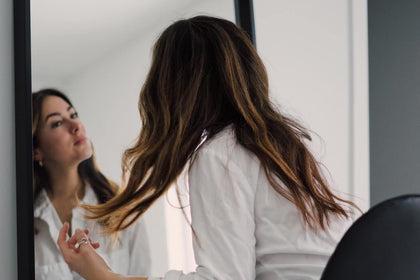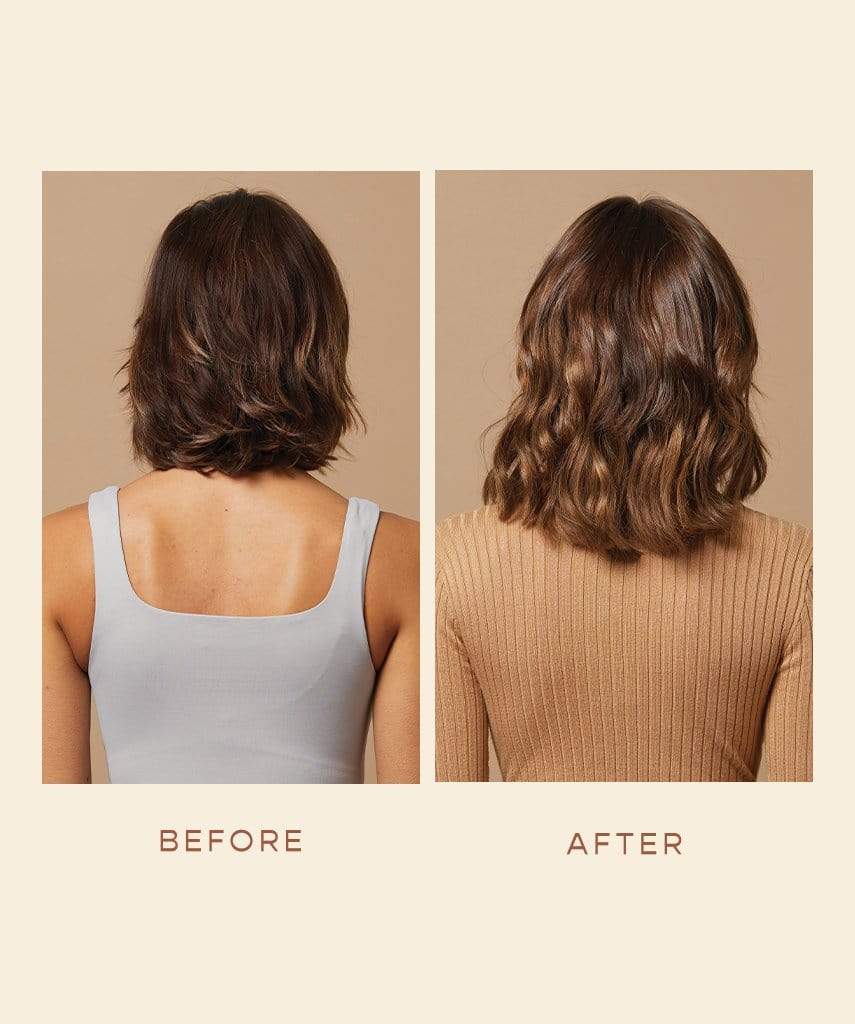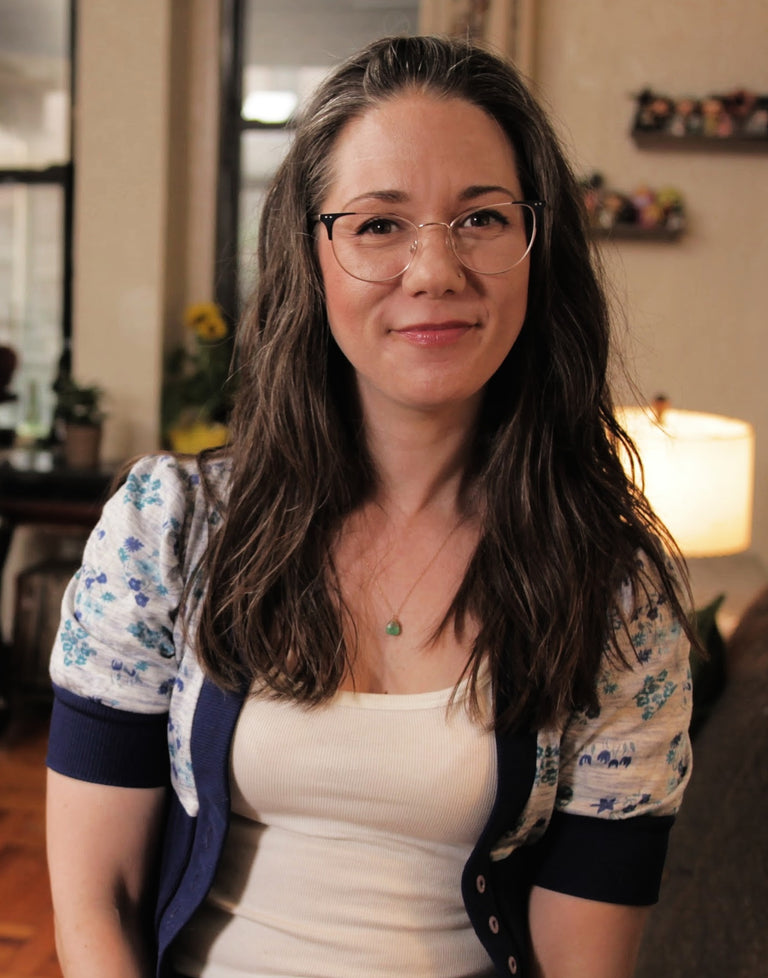Some hair shedding is normal. After all, it's part of the natural growth cycle our hair follicles go through. But how can you tell when normal shedding becomes abnormal and if your hair is thinning?
If you suspect you might be experiencing hair thinning, read on to get advice from experts about how to identify hair thinning and hair loss. Plus, find out what products you should use to combat thinning hair ASAP.
What Is Normal Hair Shedding?
It seems like this should be a pretty easy question to answer — but when it comes to a medical perspective on hair shedding, it becomes a little more complex.
“There exists more medical standards for determining hair loss in men or women than hair thinning,” said Dr. Andrea Paul, medical doctor and advisor to Illuminate Labs. “Hair loss tends to follow established patterns and be caused by established biological processes, while hair thinning is a more subjective process.”
So general thinning is harder to pinpoint than hair loss, and it’s also subjective because each person’s “normal” daily shedding varies.
“We generally quote that [losing] 50 to 200 hairs a day is normal; however, this is very relative,” said Dr. Erum Ilyas, board-certified dermatologist and founder of AmberNoon. “I tend to avoid focusing on the actual number of hairs since that added stress can contribute to further hair loss.”
Best Seller: The GRO More Kit for Thinning Hair
What Are the Signs of Hair Thinning?
Despite the fact that hair thinning might be more difficult to pinpoint than hair loss, medical and hair experts have shared the common signs to look for if you think your hair is thinning.
“Each individual has a general sense of what is normal for them,” said Dr. Ilyas. "In general, rest assured, if you feel like you are losing more than what is normal for you, I believe you.”
Changes in Hair Quality and Texture
Dr. Ilyas shared one sign that could signal hair issues before you even begin to notice increased shedding.
“One of the earliest signs of hair thinning, even before it actually sheds, is a change in the quality and texture of the hair,” she said. “This is an important concept and stage to understand as it occurs prior to the actual shedding of the hair.”
For example, you might notice the following changes in your hair:
- Finer texture
- More difficult to manage
- More prone to frizzing
- More prone to tangling
- More easily broken
“Some patients will describe it as a change in the overall quality of their hair,” said Dr. Ilyas. “They may find themselves using more products to compensate for how difficult their hair becomes to manage, or they may even find themselves opting for shorter hairstyles to avoid tangling and to add volume.”
For best results, only opt for hair care products that are free of harsh or potentially toxic ingredients. For instance, the GRO Revitalizing Shampoo & Conditioner Kit contains two gentle, nourishing formulas that features Karmatin™, a vegan alternative to keratin, which physically bonds to each strand to promote strong, shiny looking hair.
Stray Hairs Everywhere
If you see stray hairs all over the bathroom floor or larger clumps in the shower drain, this is a likely sign that your hair is thinning.
“If you wake up with more hair on your pillow, rake your fingers through your hair, or comb your hair and come out with lots of hair, your hair might be thinning,” said Dr. Daniel Boyer, medical doctor and researcher with Farr Institute.
Lighter Ponytail
While it might be hard to see your hair thinning, you can generally tell if your hair feels lighter. Pulling your hair up into a ponytail is a good way to feel if it’s thinner.
“If you find your ponytail feeling and visually appearing smaller and less voluminous, this may signify thinning hair,” said Dr. Sam El Mais, a board-certified aesthetic dermatologist with Medlink Students.
Visible Scalp
If you see parts of your scalp peeking through that weren’t visible before, this could certainly signal overall thinning.
“This is practical, especially when you tie your hair up,” said Dr. Boyer. “You may notice the appearance of more scalp, and also the hair part has started widening, especially on top of your head.”
The top of the head, aka the crown, is another area to keep an eye on. Experts agree that this is one of the first areas many people notice their hair thinning.
If you're concerned about visible thinning, consider adding GRO Hair Serum to your routine. This plant-based serum encourages thicker, fuller looking hair in as soon as 90 days of daily use.
Clumps of Hair
If you see your hair coming out in clumps, this is a pretty clear sign that it’s thinning and may signal a more serious root cause may be at play.
“If your hair falls out in strands, that is considered normal, but if you notice it falling in clumps, you may be experiencing hair loss,” said Dr. Jen Haley, board-certified dermatologist with Editor’s Pick.
What to Do If Your Hair Is Thinning
Increased hair shedding and visible thinning are never, ever fun. So what should you do if you think your hair is thinning? Here are a few tips from our experts.
Start a Hair Diary
“First, try to think about the possible reasons behind thinning hair,” advised Dr. Ken Jeryle Papelleras, a board-certified obstetrician-gynecologist with Ketogenic Buddies. “Check your stress levels or any medications you might be taking that tend to cause hair loss (such as acne medications and cholesterol-lowering drugs). Lacking certain vitamins can also lead to hair loss, so check in on your diet as well.”
The best way to gather this information? Gathering some ideas and observations will help you and a health care provider further pinpoint the underlying causes for your thinning hair, so you can pursue treatment. Also try tracking your progress with photos!
“Think about starting a hair diary,” suggested Dr. Jen Haley, board-certified dermatologist with Editor’s Pick. “How much hair do you seem to be losing? How many days since your last wash? Some people find this helpful because they notice that they actually aren't losing hair as much as they thought they were.”
Seek Professional Medical Advice
Hair thinning and hair loss can happen for many reasons. Sometimes it could be temporary hair loss that's commonly reversible, while in other instances, underlying health conditions or medications could be the culprits.
“If your hair loss is gradual and not associated with other symptoms, it is not unreasonable to start with over-the-counter options to stimulate further hair growth,” advised Dr. Ilyas. “However, if you do have other symptoms or your hair loss is not consistent with what you would expect based on your family history, I highly recommend seeing a doctor.”
A dermatologist can help you get to the root of the problem. “Some changes in the scalp can't be seen from the outside, so you’ll likely need an examination with scrutiny for things like broken hairs, bald patches and scale,” said Lauren Udoh, creative hair director at Wig Reports.
A doctor can help uncover or rule out common causes for hair thinning, including:
- Hormonal changes
- A thyroid problem
- Oral contraceptives
- Pattern hair loss (aka androgenic alopecia, male pattern baldness or female pattern baldness)
- Patchy hair loss and bald spots associated with alopecia areata
- Sudden hair loss caused by stress or shock, also known as telogen effluvium
Up Your Hair Care Game
While investigating the possible causes of thinning hair or hair loss, making some adjustments to your hair care game can help support your hair follicles from the inside and out.
“Use a scalp serum or hair oils that will prevent hair thinning by preventing hair breakage,” recommended Dr. Boyer.
Best-selling GRO Hair Serum has been carefully formulated with clinically-backed phyto-actives that help support your scalp’s microbiome for optimal health. Just apply one dropper of serum to your scalp daily — you can apply it all over or target problem areas. Get thicker, fuller looking hair in as soon as 90 days of consistent daily use.
Explore: GRO Hair Serum Customer Reviews
And when it comes to styling and product, think about giving your scalp a little extra TLC by avoiding tight hairstyles, chemical treatments and excessive heat styling.
Take Care of Your General Health
Your overall health is a pillar for healthy hair. “To maintain healthy hair at any age, make good lifestyle choices such as eating more nutrient-dense foods, keeping stress to a minimum and getting adequate sleep,” recommended Dr. Papelleras.
A healthy diet is important, and covering your bases with a hair-specific supplement could help fill any gaps. “A balanced diet will stabilize hormones in your body, while vitamin supplements like biotin can enhance hair growth and strengthen existing hair,” said Dr. Boyer.
#include-related-slider#
The Takeaway
We all shed hair daily, but if you notice that you’re losing more hair than is typical, you might worry that your hair is thinning. Look out for changes in hair texture, a thinner ponytail, more visible regions on your scalp and more stray hairs around the house as signs that could signal thinning hair. If an increase in your daily shedding is worrying you, speak to a dermatologist to get to the root of the matter.
Additionally, consider investing in hair products designed to support thinning hair — through thick and thin.
More From VEGAMOUR
- 5 Signs It's Time to See a Doctor About Hair Thinning
- Hair Loss After 50? Here's What You Should Know
Photo credit: Mathilde Langevin/Unsplash
Back





















